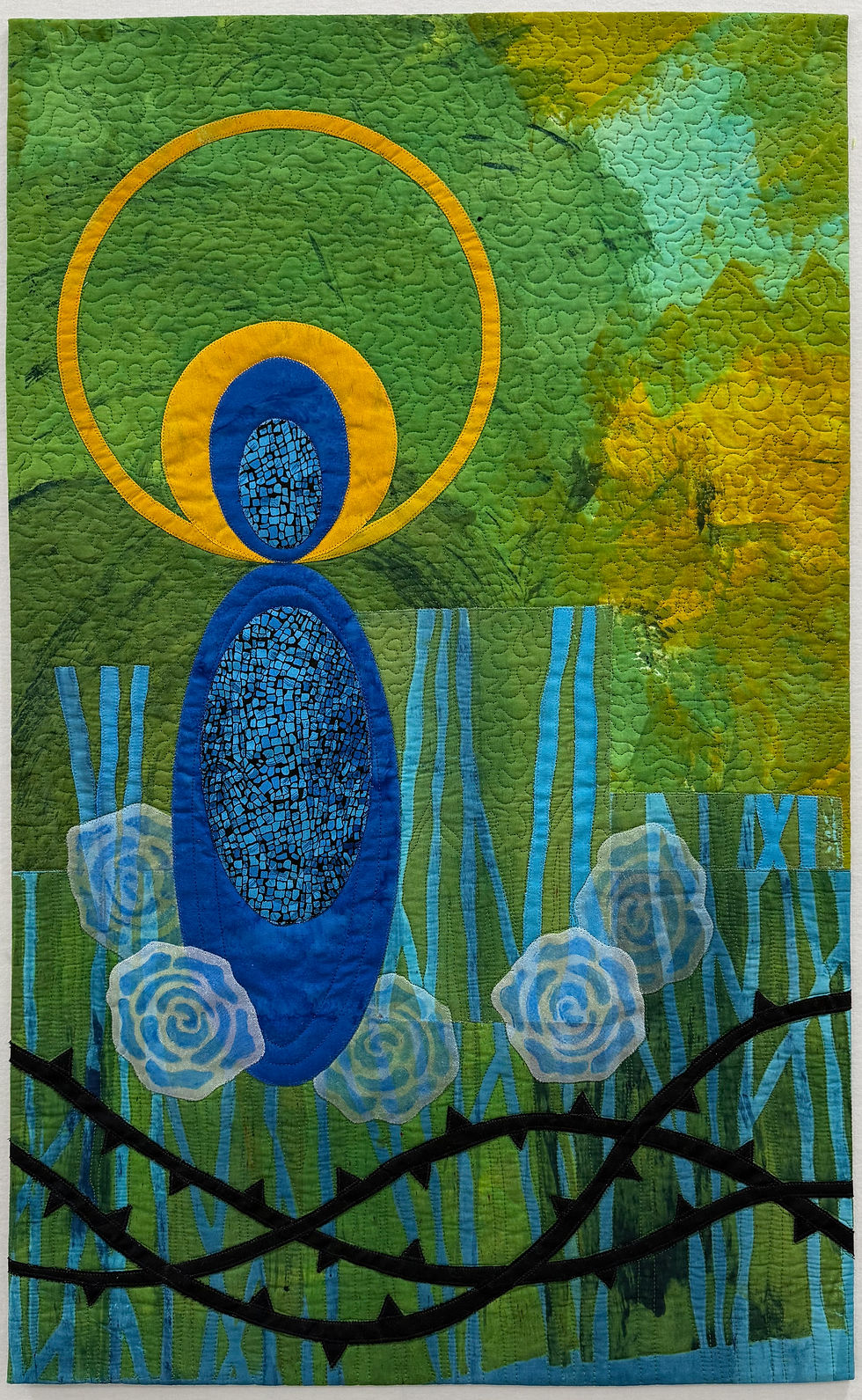FEMINA - ALLISON JAMES
- Allison James
- Nov 3
- 3 min read
My series of quilts for Femina draws on my family history. They interrogate the lives of my grandmother, my mother and my own by asking what was life like for three generations of 20 year old women? Our family history is, sadly, rather sketchy, so I have been trying to piece it together. Stitching these stories is one way to do it.
FEMINA 1
20 in the 1920s
My grandmother was born in 1901 and so, her 20s were played out in the 1920s, a time of great change for women in the UK following the ending of the first world war. Women’s suffrage was first granted in 1918 to women over the age of 30 but, by 1928, it had been extended to women over 21 on an equal basis to men. Women’s lives had been changed radically by the first world war. A shortage of men led to more women being employed in factories with many, for the first time, earning a wage. This brought with it a new sense of independence from men. For a working-class woman like my grandmother this was the background for her future life.
She left her small rural village to begin work at the Wedgewood factory in the Potteries where she was employed to put the handles on teacups. At this time, women made up half of the work-force in the Staffordshire potteries, mostly doing menial, unrecognised jobs, although attaching cup handles was a skilled task. This was also the era of Clarice Cliffe, one of the first women potters, whose art deco designs became iconic. A statue was commissioned in 2025 to acknowledge the work of women like my grandmother.
After marriage and two children, she and my grandfather became publicans. Employed by a brewery, they became part of the respectable working-class. Later, they bought a house and were able to retire on a pension which enabled them to go ‘abroad’ – to Europe – on holidays, long before package holidays became commonplace. My grandmother was clearly aspirational and indeed I see this thread running through the generations of women in my family.
The quilt is made from a a combination of strip piecing and machine appliqué and is machine quilted. It captures the spirit of my grandmothers’ life in the 1920s. The background is pieced in the colours - green, white and purple - used by the suffragettes for their banners and these strips are overlaid by a black art deco design using bias tape. I know not if she was much aware of the suffragette movement, although she would have benefitted from the changes in women’s lives that their protests brought about. However, more surely, while working in the pottery factories, she must have witnessed the influence that Art Deco was having on design. Indeed, I have a plate she must have purchased or been given that bears the marks of this style.
At the bottom of the quilt is a tangle of cup handle silhouettes. No ordinary handles, these bone-china adornments were not just functional. They were often highly intricate in shape and even, on occasion, decorated with the patterns on the cup itself. Here are the daily artefaacts that my grandmother worked with.
Finally, in the centre of the quilt is a 1920’s dress silhouette, the kind of drop waisted shift dress that my grandmother might have worn. It is made from a piece of silk taken from a dressing gown that my grandmother must have bought in Italy later in her life while on her travels abroad. I wore this silk dressing gown myself for many years until it got too fragile. That I have been able to use a fragment of it in a quilt that celebrates my grandmother’s life gives me immense satisfaction.

20 in the 1920s
(20" x 32")



Comments